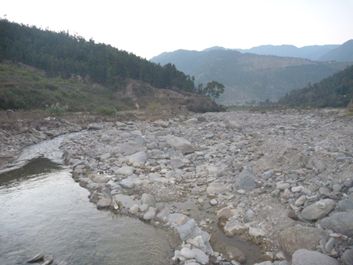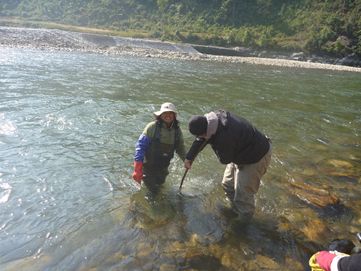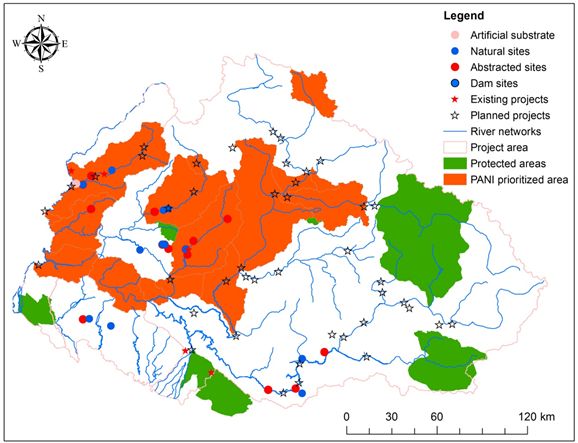Development of an environmental flow assessment tool for the region

Rivers are the lifelines of a landscape and provide invaluable ecosystem services to societies. It is, therefore, vital to consider all the benefits provided by the river when making water development plans. The Mahakali and Karnali are major river systems in the Far- and Mid-Western development regions of Nepal, respectively. Many sections of these basins have been planned for the development of hydropower dams. The impacts of these projects on aquatic ecosystems and the services they provide for humans could be severe.
Environmental flows (EFs) are a means of understanding the quantity, quality and timing of water flows necessary to maintain a healthy ecosystem. Collecting data on aquatic organisms is required to create a robust EF assessment that guides future river basin development.

The International Water Management Institute (IWMI) has partnered with Kathmandu University on a water resources development project funded by the United States Agency for International Development (USAID). The project, nicknamed Digo Jal Bikas, will develop an EF assessment tool for the region based, in part, on the collection and analysis of benthic macro-invertebrates, small organisms living on the riverbed.

In November and December 2016, an ecological sampling team led by Dr. Ram Devi Tachamo Shah, Postdoctoral Fellow, Kathmandu University, carried out post-monsoon ecological sampling in the Karnali, Mahakali and Mohana river basins in Western Nepal. Benthic macro-invertebrates were sampled from various habitats in both undisturbed and disturbed (water mills, irrigation canals, etc.) river stretches. At each sampling station, 100 meters were surveyed by walking along the river bank and visually estimating riverbed composition and coverage of macro-invertebrates at 10% intervals. Ten samples from the bottom layer of the river were collected from 33 sampling sites across 11 districts. Water quality parameters were also measured at each site to supplement the biological assemblages.
The completed EF assessment tool will provide water managers with the detailed associations between flow regimes and biota, which are necessary to more effectively manage the rivers of the Himalayas.
View IWMI’s video describing environmental flows:

